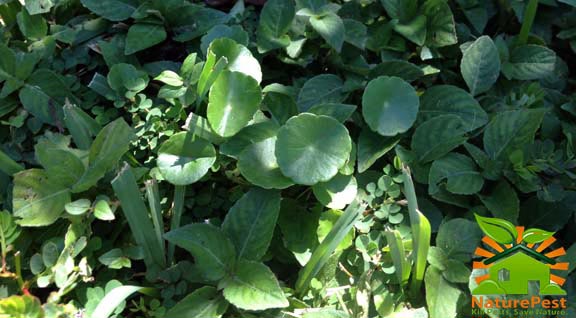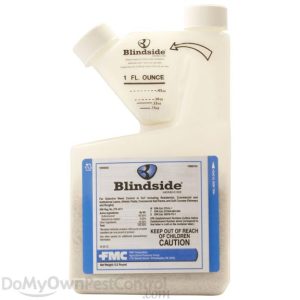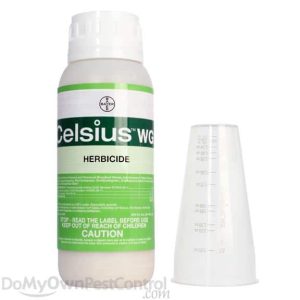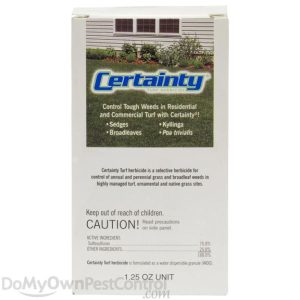How to get rid of weeds in lawn
Podcast: Play in new window | Download
Subscribe: Apple Podcasts | RSS
Weeds are a perfect lawn’s worst enemy, on top of insects and diseases left untreated weeds can wreck a lawn in just a couple of months, how to get rid of weeds in lawn can become a nightmare to most people.

For the longest time when people asked how to get rid of weeds in lawn all that was available were weed and feed products that contain Atrazine, however you had to time it perfectly in the spring and fall otherwise you missed your window of opportunity because Atrazine will burn your lawn if the temperatures are to high or weeds that are annuals would become perennials if left over a the winter season.
Atrazine has been the most widely used herbicide in the U.S. and has been classified a restricted use pesticide or RUP which means it has many application restrictions and if you are a commercial pest control operator or pest control business you have to apply for a restricted use license in order to apply Atrazine in Florida.
With more and more people looking for natural and organic pesticides and herbicides some have experimented with commercial vinegar and gluten corn meal however finding theses products locally or with the amount and frequency in which they have to be applied in order get the results you want, most have found that unless your retired and you are married to your lawn its not feasible.
In integrated pest management you are trained to identify the species you are treating and then decide on the least harmful method to the environment to control the pest problem, for weeds there are a few that most people know like dollar weeds but in any lawn you may have 3, 4 or 5 different broad leaf weeds, sedges and grasses and trying to identifying them can poses a frustrating challenge.
In the commercial lawn care business people hire us to make there lawns look spectacular and these customers only want the lawn they installed and unfortunately we have to use synthetic chemical pesticides such as selective and pre-emergent herbicides to control weeds.
Science has not made a product that is natural and effective that is commercially viable to control weeds at an affordable price that most home owners and property owners can use.
So what is the solution to protecting the environment and the health of people, pets and other important beneficial insects and pollinators like bees?
The responsible use of modern less toxic and environmentally responsible products, applied only when required and following label directions.
Here is how to get rid of weeds in lawn
When you ask today how to get rid of weeds in lawn you will will have many options. We use 3 types of selective herbicides or lawn weed control products to answer the question how to get rid of weeds in lawn for our customers. Why 3 and not one? Because there is no one product on the market that will get rid of weeds in lawn.
Depending on the type of lawn you have you will have to make choices on the active ingredients you will need to purchase.
My #1 choice for broad leaf weed control including sedges on St. Augustine lawns is Blindside Selective herbicide which controls 70 varieties of weeds.
When people ask me how to get rid of weeds in lawn quickly i recommend Blindside.
Blindside can be used on Turf Including Residential, Commercial and Institutional Lawns, Athletic Fields, Commercial Sod Farms, Golf Courses (Fairways and Roughs), and Other Non-crop Sites. Warm-Season grass: St. Augustine grass, Bermudagrass and hybrids, Centipedegrass, Zoysiagrass Cool-Season grass: Kentucky Bluegrass, Tall Fescue.
People ask me all the time how to get rid of weeds in lawn in the middle of summer without burning the lawn? The reasons I like Blindside is because on St. Augustine lawn in South Florida if i show up to a property in mid august and it has weeds I can apply it at the lowest label dose and it will not burn my lawns so you can apply all year long unlike with Atrazine.
Second it works on sedges so I don’t have to apply a second product like Certainty which only works on Sedges like Globe Sedge.
If on rare occasions it fails to control certain weeds like Dicondra which is not on the label, therefore the product didn’t fail, if the species is not on that label it does not control it. I can use my #2 choice Celsius which will control Dicondra.
I prefer Blindside over Celsius because it works faster than Celsius usually within a couple days which customers love unlike Celsius can take weeks or up to a month.
Both Blindside and Celsius will not burn my St. Augustine lawns.
If all I have are sedges then I will use my #3 product Certainty.
What I love about all these 3 products is portability they come in small lightweight containers in a wettable granule form and come with their own measuring devices; also they can be applied with backpack sprayers on small properties so you don’t need to use a spray rig for small jobs. One 8 oz bottle of Blindside can treat 50,000 square feet of lawn.
This is a plus because you reduce your pesticide spill exposure unlike with liquid bottle that can burst or spill.
CAUTION: always use a dedicated sprayer for lawns when using herbicides, even if you clean out your equipment you will still have residues that can damage non target plants and shrubs.











